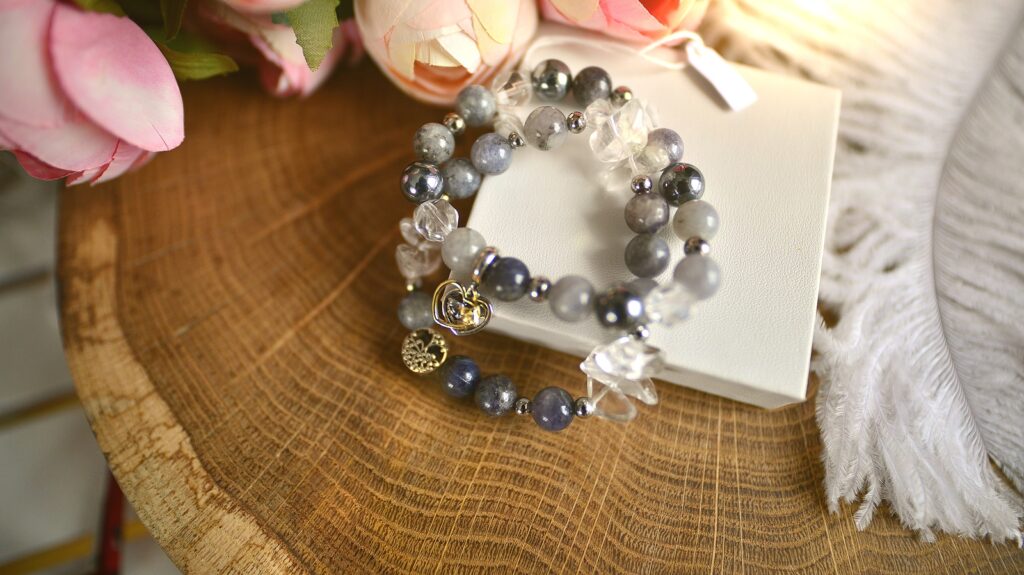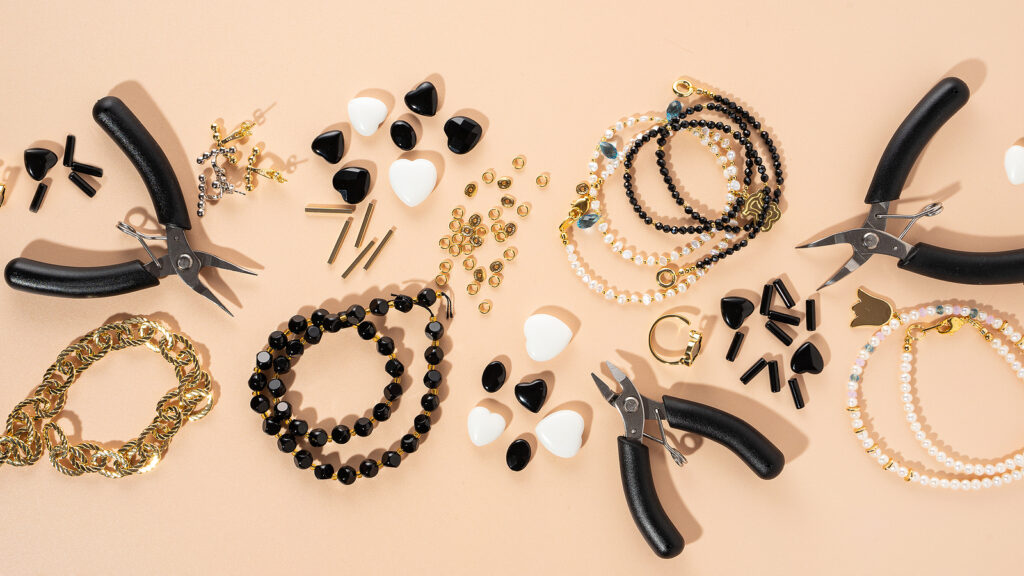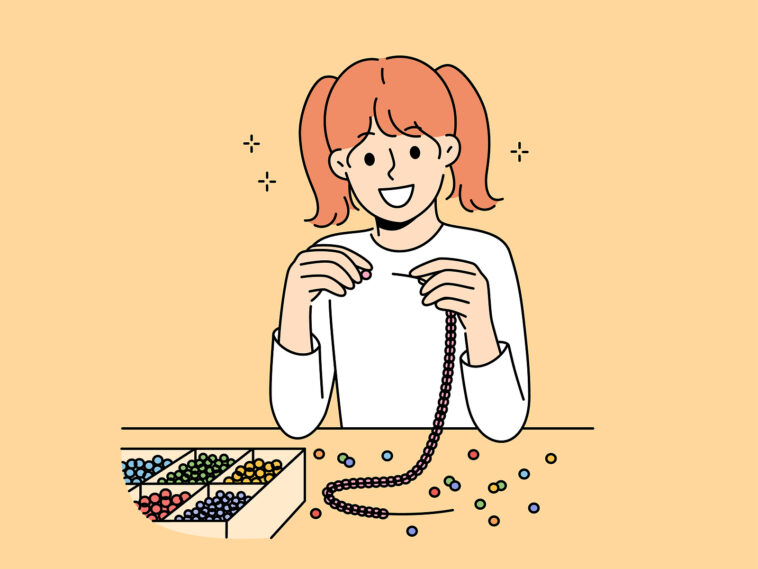DIY Jewelry
Embracing the trend of DIY home decor has been an incredibly rewarding journey for me. Crafting my own decor not only lets me infuse my unique style into every corner of my home but also enables me to create personalized gifts for loved ones.
In this comprehensive guide, we will dive into the exciting world of DIY home decor, exploring various techniques, materials, and tips to help you embark on your creative journey in transforming your living space.
Getting Started with DIY Jewelry
Why Should You Choose DIY Jewelry Making?
Engaging in DIY jewelry-making offers an array of compelling reasons to embark on this creative journey. When you choose to craft your own jewelry, you unlock a world of possibilities that allow you to:
- Express Your Unique Creativity: DIY jewelry-making empowers you to unleash your creativity and design jewelry pieces that are a true reflection of your personal style and artistic vision. Whether you prefer minimalist elegance, bohemian chic, or bold and extravagant designs, you have the creative freedom to bring your ideas to life.
- Budget-Friendly Creations: Creating your own jewelry doesn't mean compromising on quality or breaking the bank. In fact, it's a cost-effective way to adorn yourself with beautiful accessories. You can control the materials and expenses, ensuring that your jewelry fits your budget while maintaining exceptional craftsmanship.
- Craft Personalized Gifts: Handcrafted jewelry makes for exceptional and heartfelt gifts. Whether it's a birthday, anniversary, or any special occasion, you can customize jewelry to match the recipient's taste and create memorable, sentimental gifts that will be cherished for years to come.
- Therapeutic and Meditative Hobby: DIY jewelry-making offers a therapeutic escape from the stresses of daily life. The process of designing, assembling, and creating jewelry can be meditative and relaxing, allowing you to unwind and focus your mind on a rewarding and enjoyable craft.
- Eco-Friendly Practices: Sustainable and environmentally conscious choices are increasingly important. DIY jewelry-making allows you to be eco-friendly by repurposing old jewelry or using sustainable and ethically sourced materials. This conscious approach to crafting contributes to reducing waste and supporting ethical practices within the jewelry industry.
Essential Tools and Supplies for DIY Jewelry-Making
Before embarking on your DIY jewelry-making adventure, it's essential to gather the necessary tools and supplies to ensure your projects go smoothly. Here's a detailed list of the basics you'll need:
- Pliers: Invest in a variety of pliers, including chain-nose pliers for bending and holding, round-nose pliers for creating loops and curves, and flat-nose pliers for gripping and straightening wire and components. Having the right pliers ensures precise and efficient work.
- Wire Cutters: High-quality wire cutters are essential for cleanly cutting wires, chains, and other materials. They help you achieve professional-looking results in your jewelry projects.
- Beads and Findings: Build a diverse collection of beads in various shapes, sizes, and materials. Additionally, stock up on clasps, jump rings, connectors, and other findings to secure and embellish your jewelry pieces.
- Stringing Material: Depending on your project, choose suitable stringing materials such as beading wire, cord, thread, or even leather. The choice of stringing material plays a crucial role in the overall design and durability of your jewelry.
- Design Board: A design board provides a dedicated space for planning and laying out your jewelry designs. It allows you to experiment with different arrangements and visualize the final piece before assembly.
- Storage Containers: Keep your beads, findings, and tools organized and easily accessible by investing in storage containers. Having a well-organized workspace enhances efficiency and creativity during your crafting sessions.

Techniques for DIY Jewelry
Delving into the world of DIY jewelry-making opens up a universe of creative possibilities. Here, we'll delve into several techniques, each offering its own unique charm and appeal, to help you expand your jewelry-making repertoire:
Beadwork
Beadwork is a captivating and versatile technique that involves working with an array of beads, encompassing various materials, sizes, and shapes. To embark on this journey, consider these approaches:
- Stringing: This is the simplest form of beadwork, where beads are threaded onto a string or wire to create bracelets, necklaces, or earrings. It's an ideal starting point for beginners.
- Beading Stitches: Elevate your beadwork by mastering intricate stitching techniques like peyote, herringbone, and right-angle weave. These stitches enable you to craft intricate and mesmerizing bead patterns.
- Wirework and Beads: Blend the beauty of beads with the flexibility of wire by incorporating wirework into your designs. Create stunning jewelry pieces that marry the delicacy of beads with the structure of wire.
Wire Wrapping
Wire wrapping is a versatile method that involves manipulating wire to fashion various jewelry items. Here's how you can utilize this technique:
- Wire-Wrapped Pendants: Elevate the appeal of gemstones or focal beads by securely wrapping them in wire. This results in captivating pendants that can become statement pieces.
- Earrings: Craft intricate and distinctive wire-wrapped designs for earrings. The possibilities are endless, from minimalist designs to elaborate, wire-woven creations.
- Custom Rings: Forge your own path by shaping and wrapping wire to create custom rings. This allows you to design rings that perfectly fit your style and finger size.
Polymer Clay Jewelry
Polymer clay is a pliable and colorful medium that, when baked, transforms into durable jewelry. Dive into this technique by following these steps:
- Molding and Shaping: Sculpt polymer clay into beads, pendants, or charms. Its pliability allows you to fashion intricate and unique shapes.
- Texture and Color: Elevate your creations by incorporating texture sheets, stamps, and paints. These additions enable you to introduce captivating patterns and a vibrant color palette to your jewelry.
- Baking: Ensure a successful outcome by following proper baking instructions to harden your polymer clay creations. This step is essential for making your jewelry sturdy and long-lasting.
Resin Jewelry
Resin is a transparent and liquid material that, when cured, imparts a glossy, glass-like finish to your jewelry. Dive into resin crafting through these methods:
- Resin Casting: Explore the art of resin casting by pouring resin into molds to shape exquisite items like cabochons, charms, or pendants. This technique allows for a high degree of customization.
- Resin Embedding: Personalize your jewelry by embedding objects such as flowers, photographs, or tiny keepsakes in resin. This creates sentimental and visually stunning pieces.
- Resin Coating: Give new life to surfaces like wood, paper, or fabric by applying a resin coat. This not only enhances their appearance but also adds a layer of protection and durability.

Design and Inspiration
In the realm of DIY jewelry-making, the process begins long before you pick up your tools and materials. It starts with finding inspiration and translating those ideas into tangible, wearable art. Here, we'll delve into the intricacies of seeking inspiration and sketching your designs:
Finding Inspiration:
- Nature's Beauty: Nature is an abundant source of inspiration for jewelry creators. Look to the intricate details of leaves, the delicate allure of flowers, or the captivating patterns of seashells. The organic world offers endless possibilities for design elements and motifs.
- Color Palette Exploration: A harmonious color palette can serve as the backbone of your jewelry design. Delve into the world of color theory, and choose hues that resonate with your emotions and aesthetics. Consider the moods and emotions each color evokes and how they can be woven into your jewelry.
- Fashion Trends: Staying abreast of the latest fashion trends can provide valuable insights into contemporary jewelry design. Study fashion magazines, runway shows, and online platforms to identify emerging styles, materials, and techniques. Adapt and infuse these trends into your own unique creations.
- Personal Narratives: Your own life experiences, cultural heritage, and personal stories can be a wellspring of inspiration. Craft jewelry pieces that not only reflect your journey but also celebrate your culture, traditions, and memories. Such creations often hold deep sentimental value.
Sketching Your Designs:
Once you've gathered inspiration, the next step is to bring your ideas to life through sketches and designs:
- Materials Exploration: Before sketching, consider the materials you plan to use. Each material has its unique characteristics, and understanding them can guide your design choices. For example, gemstones may influence the overall shape of a piece, while polymer clay allows for intricate details.
- Sketching Tools: Equip yourself with quality sketching tools, such as sketchbooks, pencils, erasers, and fine-tipped pens. These tools will help you convey your ideas accurately.
- Brainstorm and Rough Sketches: Start with brainstorming sessions, jotting down your initial ideas. Then, create rough sketches of your jewelry pieces. Don't worry about perfection at this stage; focus on capturing the essence of your design.
- Detailed Design: Refine your rough sketches into detailed designs. Pay attention to proportions, dimensions, and intricate details. Consider how various elements will come together in the final piece.
- Multiple Iterations: Don't be afraid to create multiple iterations of your design. This iterative process allows you to explore variations and refine your ideas until you're satisfied with the concept.
- Technical Considerations: While sketching, keep technical aspects in mind, such as the type of clasp, wire gauge, and the feasibility of your design. Ensure that your jewelry piece is not only aesthetically pleasing but also practical and durable.
- Feedback and Collaboration: If you're open to it, seek feedback from fellow jewelry enthusiasts or professionals. Collaborating with others can lead to innovative ideas and improved designs.
Tips and Tricks for DIY Jewelry-Making
Embarking on the journey of DIY jewelry-making is not just about assembling materials; it's a craft that rewards those who delve deeper into its intricacies. Here are some invaluable tips and tricks to help you elevate your jewelry-making skills:
Patience and Persistent Practice
Crafting exquisite jewelry takes time and dedication. Just like any other skill, you'll likely encounter challenges and setbacks at the beginning. Don't let initial frustrations deter you. Embrace them as opportunities for growth. With each project, you'll gain confidence and finesse in your craftsmanship.
Quality is Key
The quality of materials you use plays a pivotal role in the longevity and overall appeal of your jewelry. Invest in high-quality beads, wire, and findings. Opt for materials that won't tarnish or fade over time, ensuring that your creations stand the test of time and maintain their beauty.
Unleash Your Creative Spirit
DIY jewelry-making is a canvas for your imagination. Don't shy away from experimenting with new techniques and materials. Mix and match different beads, metals, and textures to create truly one-of-a-kind pieces. Innovation often leads to the discovery of unique and stunning designs that set your jewelry apart.
Prioritize Safety and Well-Being
Safety should always be a top priority in your jewelry-making endeavors. When working with tools, especially those involving cutting or shaping, wear protective gear such as safety glasses to safeguard your eyes. Additionally, if you're using chemicals like resin, ensure you're working in a well-ventilated area to minimize exposure to fumes and follow all safety guidelines provided with the products.
Mastering Basic Techniques
While experimentation is encouraged, mastering fundamental jewelry-making techniques is essential. Learn how to create secure knots, make consistent wire loops, and properly attach findings. These foundational skills will form the basis for your more intricate and creative projects.
Embrace Resources and Learning
The world of jewelry-making is vast and constantly evolving. Stay open to learning by exploring books, online tutorials, and workshops. These resources can introduce you to advanced techniques and inspire your creativity with fresh ideas and designs.
Attention to Detail
Precision is key to crafting professional-looking jewelry. Pay attention to the smallest details, such as ensuring beads are securely attached, wire loops are consistent in size, and clasps are properly aligned. These subtle touches can make a significant difference in the overall quality of your pieces.
Maintenance and Care
After creating your jewelry, educate yourself on how to properly care for and maintain your pieces. Provide storage solutions that prevent tangling and tarnishing. Regularly clean and inspect your jewelry to ensure it continues to shine.
Sharing Your Creations
Once you've perfected your craft in the world of DIY jewelry-making, there are various avenues to showcase and share your creations, each with its own unique charm and potential. Here's an in-depth look at some of these opportunities:
Selling Your Jewelry Online
- Etsy: Consider opening a shop on Etsy, a popular online marketplace known for its artisan and handmade products. This platform provides a vast audience of potential customers who appreciate the value of handcrafted jewelry. You can set up shop, list your items, and engage with a community of fellow artisans and jewelry enthusiasts.
- Instagram: Leverage the visual appeal of Instagram to showcase your jewelry creations. Create a business account, curate a visually appealing feed, and use relevant hashtags to reach a wider audience. Instagram's shopping features make it easier for potential buyers to browse and purchase your pieces.
- Your Own Website: For those looking to establish a distinct brand and have full control over their sales platform, creating a personal website can be a rewarding endeavor. This option allows you to tell your unique story, control the design and layout, and build a loyal customer base over time.
Gift-Giving and Personalization
- Cherished Gifts: DIY jewelry holds a special place in the world of gift-giving. Craft custom pieces for your loved ones on birthdays, anniversaries, weddings, or other significant occasions. The thought and effort you put into creating a personalized piece make it a heartfelt and cherished gift that carries sentimental value.
- Custom Commissions: Consider offering custom commissions to friends, family, or even clients. Collaborate with individuals to design and create jewelry pieces tailored to their preferences and style. This personalized approach can be a fulfilling aspect of your jewelry-making journey and may even lead to recurring orders.
- Special Occasion Jewelry: Beyond personal gifts, there's a demand for special occasion jewelry. Develop a collection of pieces suited for weddings, proms, or other formal events. These timeless and elegant creations can serve as a lucrative niche within your jewelry-making business.
- Matching Sets: Create matching jewelry sets for couples, friends, or family members. Coordinating pieces like necklaces, bracelets, or earrings can be a popular choice for gifting and are often sought after for special occasions.
- Packaging and Presentation: Elevate the gift-giving experience by paying attention to packaging and presentation. Thoughtfully designed packaging can enhance the perceived value of your jewelry and leave a lasting impression on the recipient.
Conclusion
As I look back on my personal journey through the world of DIY jewelry-making, it's clear that this craft transcends mere adornment. It's a canvas for self-expression, a means of crafting treasured connections, and a sanctuary for creativity. This comprehensive guide has illuminated the many facets of DIY jewelry-making, from unleashing our creative spirits and mastering techniques to sharing our art with the world.
Yet, at its core, DIY jewelry-making is about crafting stories, memories, and bonds. Whether it's through a carefully personalized gift or a piece created for an online audience, this craft allows us to infuse our individuality into every creation, leaving a lasting impact on both ourselves and those who cherish our handcrafted treasures.
So, as you embark on your own journey in this enchanting realm, remember that it's not just about crafting jewelry; it's about crafting moments, emotions, and connections that make this creative pursuit truly extraordinary.
Sources:




